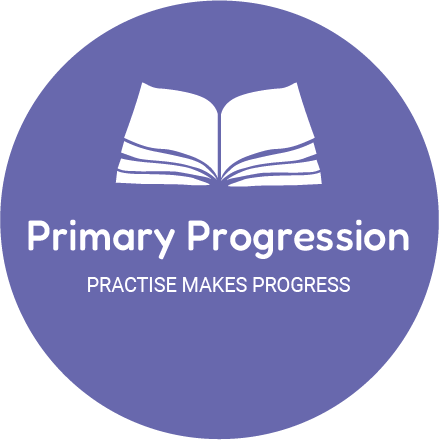Effective feedback can be a turning point in a student's learning journey, regardless of their age. But, how do you give the most effective feedback possible? What technique is best?
Top Tips for Effective Feedback in Class


1. Live Marking
Live marking is where you mark books on the go during the lesson. This allows pupils to check their work, correct it and receive support within the lesson rather than later on when they may have forgotten their track of thoughts. This method is fantastic if you are super organised, your class are all on task and understand or if you have additional staff in your room. However, you will not be able to get round to every child so make sure you select your focus children each lesson if you choose to use this method.
2. Timing
 If you are not marking within the lesson, you need to ensure you are prompt with your feedback to your students. The sooner you mark and feedback, the sooner they can progress their learning, be placed into an intervention and address their misconceptions. The best way is to have the work marked ready for the next day/lesson, e.g. you have completed a science lesson where children need to record data but your next lesson isn’t until next week. Here you should consider what would be best for your students, either mark the work this evening and address misconceptions tomorrow, or mark when you have time as long as it is before the next lesson and address misconceptions during the lesson starter.
If you are not marking within the lesson, you need to ensure you are prompt with your feedback to your students. The sooner you mark and feedback, the sooner they can progress their learning, be placed into an intervention and address their misconceptions. The best way is to have the work marked ready for the next day/lesson, e.g. you have completed a science lesson where children need to record data but your next lesson isn’t until next week. Here you should consider what would be best for your students, either mark the work this evening and address misconceptions tomorrow, or mark when you have time as long as it is before the next lesson and address misconceptions during the lesson starter.
3. Verbal Feedback
One of the best ways to provide feedback to children is verbally, especially in Lower Key Stage 2 and Key Stage 1. There will be many children that can’t or will not read what you have written down in their books; however, they will be able to discuss their work with you in the moment, or the next day and address misconceptions together. If you can’t provide feedback verbally immediately in the lesson, mark the work later in the day and use a post-it-note to leave a note for yourself regarding who you need to speak to. Then, you can personally support the child or discuss your thoughts with your TA and have them run a quick intervention to progress learning and address misconceptions.
4. Know When NOT to Mark!
 Now, one of the most effective ways to mark and provide feedback is… knowing when NOT to mark! This may seem odd, why wouldn’t you mark their work? Well, if you have spoken to the child already (verbal feedback) why would you write it down in their book if they can address it there and then? Marking every single piece of work for every single child, in depth, is a ridiculous amount of work and expectation to place on yourself (or your staff). Think about it. In one day you may teach: Handwriting, Spelling, English, Maths, Grammar, Arithmetic, Science, Guided Reading. That’s eight activities/lessons in the school day. If you have a full class of thirty children, that’s 240 pieces of work to mark! Let alone if you’re in Year 6 and your children write 3 pages for each lesson! Don’t put yourself through it, or your staff through it. Decide what is important to mark, what can have class feedback and what can have a sticker or a stamp. Who are you marking for? The children or SLT?
Now, one of the most effective ways to mark and provide feedback is… knowing when NOT to mark! This may seem odd, why wouldn’t you mark their work? Well, if you have spoken to the child already (verbal feedback) why would you write it down in their book if they can address it there and then? Marking every single piece of work for every single child, in depth, is a ridiculous amount of work and expectation to place on yourself (or your staff). Think about it. In one day you may teach: Handwriting, Spelling, English, Maths, Grammar, Arithmetic, Science, Guided Reading. That’s eight activities/lessons in the school day. If you have a full class of thirty children, that’s 240 pieces of work to mark! Let alone if you’re in Year 6 and your children write 3 pages for each lesson! Don’t put yourself through it, or your staff through it. Decide what is important to mark, what can have class feedback and what can have a sticker or a stamp. Who are you marking for? The children or SLT?
5. Stamps and Stickers
Stamps are stickers are FANTASTIC! Children love them, staff love to use them and it save so much time when marking. You can use general stamps and stickers or you can purchase personalised stamps and stickers to meet your needs. For example, in my classroom I have general stickers for well done, great growth mindset, etc. But I also have personalised stamps such as; please check your spelling, take more care with your presentation, verbal feedback given, I can see the amount of effort you put into this – well done. Find stickers and stamps that fit your personality and your classroom aesthetic and save yourself hours of unnecessary marking.
6. Whole Class Feedback

Whole class feedback can be really effective and a great time saver for marking. This could be you reading/modelling answers to work and the children self/peer assess their work. (You may need to train your class in this) This may also be after you have marked work and found consistent misconceptions across the class and you address them in the next lesson’s starter activity. You can also make this fun. If you know that in Maths, most children struggled with their 8 times tables, you can do a bit of whole class feedback and use a game like Hit The Button to practise together.
7. Consistency
Your school will have a marking and feedback policy to make sure you are being consistent with the rest of the school when you mark your books. Make sure you speak to your SLT to ensure they are happy with you using stickers and stamps (most will be!) and regularly discuss marking techniques with other teachers. This way you will also be consistent for your students and support staff. Everyone will know how you mark work and provide feedback and will be prepared for receiving this feedback. Children need routine so consistency in feedback is key.
8. Student Timeframes
 Not all the work with feedback is on you. Once you have provided said feedback, your students need to put in the effort and edit their work, addressing any misconceptions you have identified. Provide your students with realistic timeframes. For example, if it is spelling, explain that you want them to use a dictionary and a partner to correct their spelling during the 15 minute lesson starter. Another example could be, the child needs to completely redo the lesson so they have a 30-40 minute intervention scheduled with you or your TA. Allow yourself and your students to know your timeline so you can all focus.
Not all the work with feedback is on you. Once you have provided said feedback, your students need to put in the effort and edit their work, addressing any misconceptions you have identified. Provide your students with realistic timeframes. For example, if it is spelling, explain that you want them to use a dictionary and a partner to correct their spelling during the 15 minute lesson starter. Another example could be, the child needs to completely redo the lesson so they have a 30-40 minute intervention scheduled with you or your TA. Allow yourself and your students to know your timeline so you can all focus.


